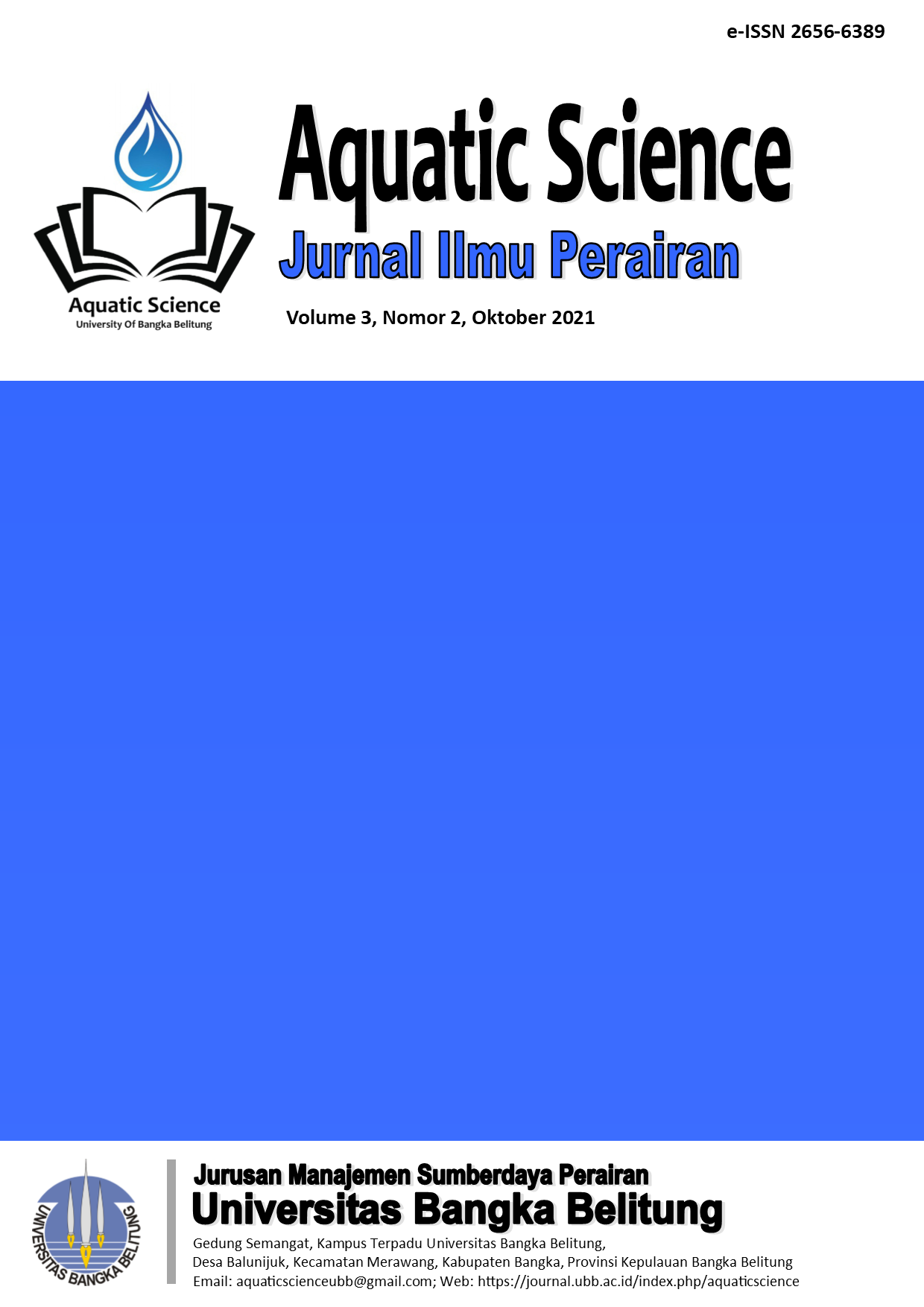Analisis Kebiasaan Makanan Ikan Bantak (Osteochilus wandersii) Di Hulu Sungai Lenggang, Kabupaten Belitung Timur
Analysis of Food Habits of Bantak Fish (Osteochilus wandersii) in the Upstream Lenggang River, East Belitung Regency
Keywords:
East Belitung, Bantak Fish, Food, Lenggang River.Abstract
The Lenggang River, East Belitung Regency is the one of organisms habitat, one of the Bantak Fish (local name). Bantak fish is one of the high economic fish and popular in the community. The aims of this study to determine the type of food, food habits and eating types, and parameters of the aquatic habitat of Bantak Fish. Field samples were taken using purposive sampling method. The analytical method used is the Largest Part Index, and Relative Intestinal Length and aquatic environmental parameters. This research was conducted from January to March 2021 in the Lenggang River, East Belitung Regency. The results obtained 8 types of plankton species as food for Bantak Fish consisting of Spirogyra grevillea, Synedra ulna, Skelotenema costatum, Zygnema stellinum, Closteriopsis sp, Closterium acrosum, Anabaena sp, and Meugoatia scalaris. The main food of Bantak Fish is Synedra ulna (IP26.0%), and Anabaena sp (IP26.3%), the complementary food of Bantak Fish is Zygnema stellinum has a value (IP12.3%), Skelotenema costatum has a value (IP13.6%) , and Meugoatia scalaris had a value (IP8.9%), and the rest as food additives from the types Spirogyra grevillea (IP4.6%), Closteriopsis sp (IP4.2%), and Closterium acrosum which had a value (IP3.9%) . Based on the analysis of the relative gut length of Bantak fish including herbivorous fish with RLG values (7.52-7.84). Further research is needed so that it can be used as a data reference for feed manufacturing activities for the benefit of Bantak fish (Osteochilus wandersii) cultivation.


